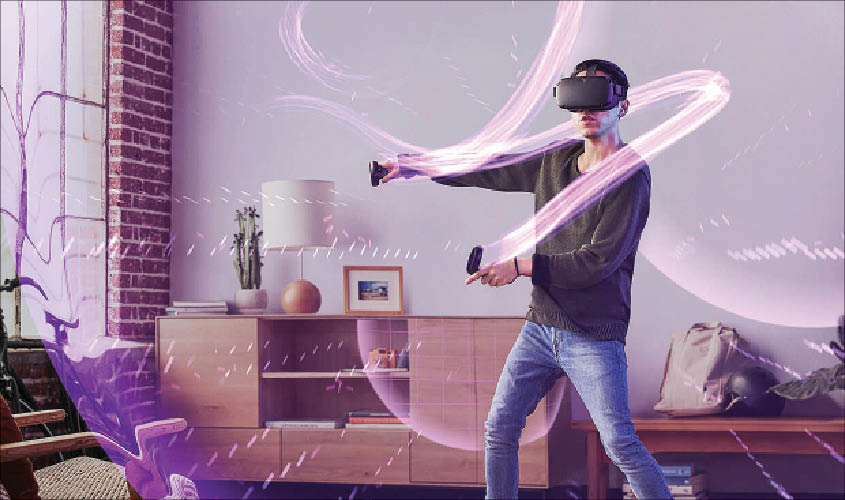There’s no telling which way virtual reality is headed. But the Oculus Quest, a state-of-the-art VR headset that has just been launched by Facebook, certainly gives us a hint—more than a hint—of VR’s future. In industry terms, the VR segment has had its limitations. It is an expensive technology with a narrow consumer base (mostly comprising gaming enthusiasts). With the Oculus Quest, however, Facebook is attempting to mainstream VR like never before.
The device was launched earlier this week at an event called Oculus Connect 5 in San Jose, California. “Each year, Oculus Connect brings together VR developers, creators, and thought leaders to share insights, get hands-on with the latest tech demos and experiences, and reimagine the possibilities of the medium. At OC5, we’re celebrating how far the industry has come in the last five years and exploring the future of augmented and virtual reality.” read the official statement by Facebook.
The previous two editions of the Oculus VR headset—Oculus Go and Oculus Rift—had gained much acclaim. So expectations ran high for its next iteration. We will soon know whether the Oculus Quest matches those expectations, but the fact remains that this device is the most advanced of all VR headsets available in the market.
It is equipped with four ultra-wide-angle sensors and touch controllers that allow users to look around in any direction and fully navigate any virtual landscape. The main highlight of the headset is that it doesn’t have to be wired to a PC or a phone; unlike the Rift, Oculus Quest is a completely wireless gadget. It also comes with a display resolution of 1600×1440 per eye, and users can adjust the lens spacing on the headset as per their comfort. The built-in system is also excellent.
Speaking at the San Jose event, Facebook CEO Mark Zuckerberg said, “We think that there are a few key qualities that any VR system that gets to scale needs to have. First, it needs to be standalone so that there are no cables and wires or smartphones to connect them with. Second, it has to support hands because that is how we are going to interact with people and objects in a natural way in virtual reality. And lastly, it has to offer six degrees of freedom so that you can’t just look around but also walk around in virtual space just like you would in the physical world. We think that if we could bring these three things in one product then it will be the foundation of the ideal form factor of a VR system. This Oculus Quest is based on these key points. It is wireless, it has got hand presence, six degrees of freedoms, no cables, no external sensors, really good position tracking. It has got adjustable fit so it is comfortable even when you wear glasses. It also comes with 360 degree audio that is even better than Oculus Go headset.”
With this launch, Oculus has announced the end of the first generation of their best-in-class VR headsets. They have also announced that soon, they will be bringing 50 new games and experiences for the Oculus Quest. According to an official statement by Oculus, these headsets will be available for consumers next year onwards, priced at $399 and above.

